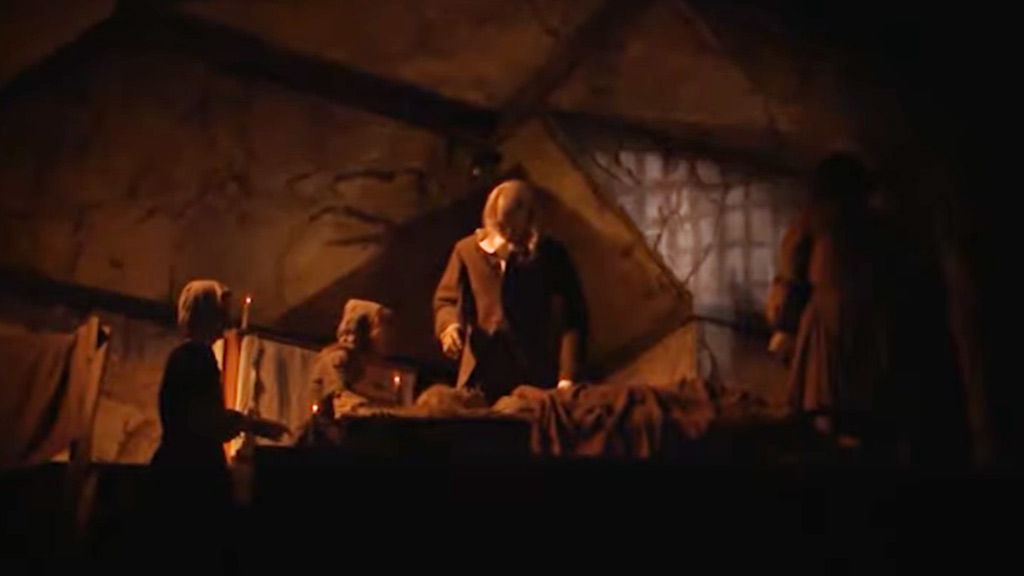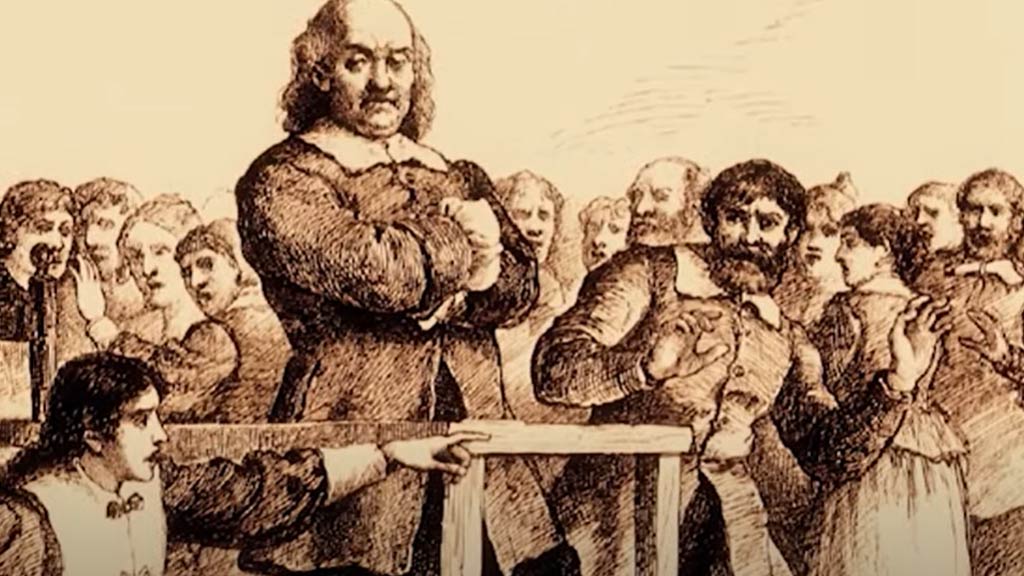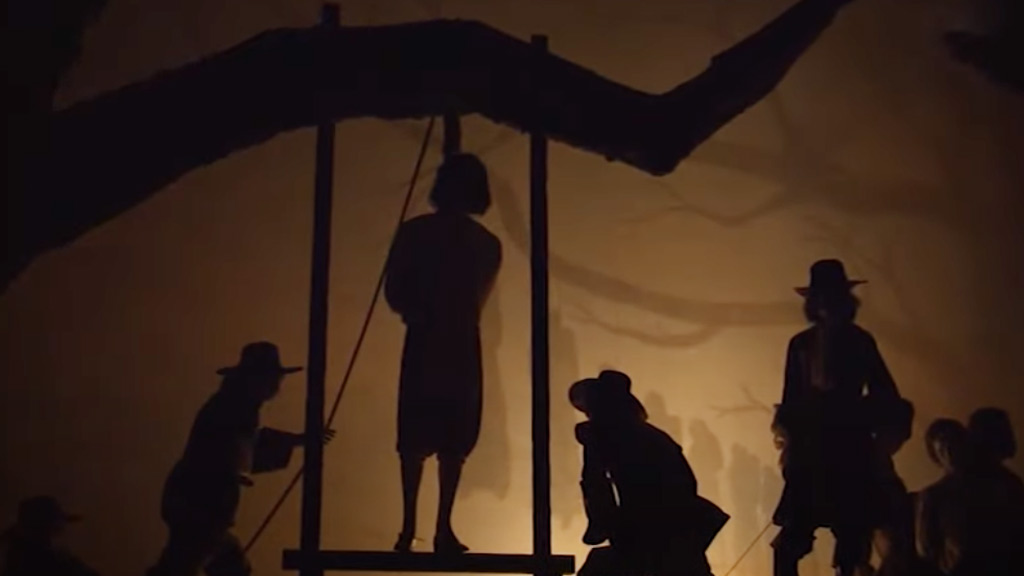Curious about the dark history behind the infamous Salem witch trials? Delve into the mysteries of one of America’s most chilling events.
Despite common misconceptions, the reality of these trials in 1692 may surprise you. Thousands of visitors flock to Salem each October, drawn by the enduring fascination with this harrowing chapter in history.
The trials, which led to the execution of twenty people, were fueled by a unique blend of fear, hysteria, and Puritan beliefs.
Unlike other witch trials of the time, Salem’s events unfolded with a sense of urgency and panic, leaving a lasting mark on American folklore.
Background of the Salem Witch Trials
The Salem Witch Trials were a series of hearings and prosecutions that occurred in colonial Massachusetts between February 1692 and May 1693.
Here’s a background on the events:
Cultural and Religious Influences

During the Salem witch trials of 1692, various cultural and religious factors played crucial roles in the escalation of events.
The Puritan belief system prevalent in New England at the time heavily influenced the villagers’ worldview. Puritans viewed the world as a battleground between God and the Devil, and any deviation from strict religious norms was seen as an alliance with evil forces.
This strict moral code fostered a climate of fear and suspicion within the community, making accusations of witchcraft a terrifying and potent weapon against perceived threats to societal order.
The deeply ingrained fear of witchcraft stemmed from a long history of European folklore and religious teachings that demonized those suspected of practicing magic.
Sociopolitical Context
The sociopolitical landscape of Salem Village in the late 17th century also played a significant role in the outbreak of the witch trials.
The community was rife with internal strife and tensions, exacerbated by economic hardship, land disputes, and power struggles among the residents.
The appointment of Reverend Samuel Parris as the minister of the village further deepened existing divisions, as his authoritarian and divisive leadership style alienated many parishioners.
The Salem witch trials must be understood within this broader sociopolitical context, characterized by a powder keg of social resentments, economic anxieties, and power dynamics.
Accusations of witchcraft provided a convenient outlet for venting personal grievances, settling scores, and exerting control over perceived adversaries.
The trials served as a manifestation of these underlying tensions, reflecting the larger societal challenges and conflicts that plagued Salem Village at the time.
Key Events That Triggered the Trials
The Salem Witch Trials were triggered by a series of events that fueled fear, suspicion, and paranoia within the community of Salem Village.
Here are some key events that precipitated the trials:
Initial Accusations and Arrests

The witch trials in Salem began with a series of accusations and arrests. Individuals like Reverend George Burroughs and Susannah Martin were among the first to be arrested in April of 1692.
Mary Eastey’s story highlights the wavering nature of the accusers, as she was released briefly but rearrested when doubts resurfaced.
The escalating number of accusations led to increased scrutiny and the eventual establishment of a Special Court of Oyer and Terminer to address the growing cases. This shift marked a turning point in the intensity of the trials.
The Role of Local Authorities
Local authorities played a significant role in the Salem witch trials. Magistrates like John Hathorne and Jonathan Corwin presided over examinations of the accused, together with Deputy Governor Thomas Danforth and others.
Their influence and decisions shaped the course of the trials, impacting the lives of many individuals in Salem.
Samuel Sewall, a notable magistrate of the time, publicly acknowledged the mistakes made in the trials, displaying a sense of remorse and seeking forgiveness for his involvement.
The actions and judgments of these local authorities not only perpetuated the trials but also reflected the prevailing beliefs and tensions of the community during that tumultuous period.
Legal Procedures and Evidential Standards
During the Salem Witch Trials, the legal procedures and evidential standards deviated significantly from contemporary standards of justice.
Here’s an overview of how trials were conducted and the evidential standards applied during that period:
Types of Evidence Used
During the Salem witch trials, various types of evidence were utilized to determine the guilt or innocence of the accused individuals.
The primary forms of evidence included spectral evidence, testimonies of witnesses, confessions, and physical examinations.
Spectral evidence, which involved the testimony of individuals claiming to have seen the specter or spirit of the accused person engaging in witchcraft, played a significant role in many cases.
This type of evidence, despite being highly controversial and lacking concrete proof, was admitted in court and used to convict numerous individuals.
Impact of Spectral Evidence
The reliance on spectral evidence had a profound impact on the outcome of the Salem witch trials. This form of evidence, based on dreams and visions, was subjective and easily manipulated, leading to false accusations and wrongful convictions.
The court’s acceptance of spectral evidence, despite objections from figures like Cotton Mather and Increase Mather, contributed to the escalation of the trials and the unjust persecution of innocent individuals.
The use of spectral evidence highlighted the lack of standardized legal procedures and evidential standards during this dark chapter in American history.
Critical Figures in the Trials

Several critical figures played significant roles in the Salem Witch Trials, shaping the course of events and influencing their outcome.
Here are some key individuals:
Accusers and the Accused
During the Salem witch trials, a significant aspect was the role of accusers and the accused individuals.
Unlike usual accusations of witchcraft which were sporadic, the Salem trials of 1692 stood out due to mass accusations by increasing numbers of people.
Typically, in witchcraft accusations, men were the primary accusers, making the involvement of girls and young women in Salem an anomaly.
This deviation from historical patterns led to a unique situation in Salem and contributed to the prevailing panic and paranoia.
Influential Leaders
In the midst of the Salem witch trials, the presence of influential leaders further shaped the course of events. Figures like Reverend George Burroughs, who vehemently defended his innocence until his execution, added complexity to the trials.
The involvement of established leaders like Cotton Mather, who addressed the people during the executions, influenced public perceptions regarding the guilt or innocence of the accused.
The actions and statements of these leaders acted as catalysts, either appeasing or inciting the local community during this tumultuous period.
Their roles in the legal proceedings and public declarations underscored the gravity of the trials and the societal attitudes towards witchcraft accusations in colonial New England.
Aftermath and Historical Reflections
The aftermath of the Salem Witch Trials left a profound impact on both the local community and American society as a whole.
Here are some reflections on the aftermath and historical significance of the trials:
Legal Reversals and Compensations
Following the chaos of the Salem witch trials, there were later attempts to rectify the unjust legal proceedings.
Samuel Sewall, a prominent figure involved in the trials, publicly acknowledged the errors that occurred, reflecting the prevailing beliefs and tensions of the time.
This admission of guilt and the desire for forgiveness set a precedent for reflecting on the injustices that unfolded during the trials.
In the case of Giles Corey, his steadfast refusal to enter a plea in court was not just a personal protest but also a statement against the flawed judicial processes of the time.
His death, while tragic, served as a reminder of the extreme measures taken during the trials and the questionable methods used to extract confessions and verdicts.
Cultural Legacy and Memorials
The legacy of the Salem witch trials is deeply ingrained in American history and culture, serving as a cautionary tale of the dangers of mass hysteria, religious extremism, and the abuse of power.
The trials continue to captivate the public imagination, inspiring numerous literary works, films, and academic studies that delve into the complexities of human behavior and society.
In Salem, Massachusetts, where the trials took place, there are numerous memorials and historical sites dedicated to preserving the memory of the victims and commemorating the tragic events that unfolded.
These memorials serve as a reminder of the dark chapters in history and the importance of learning from past mistakes to prevent similar injustices in the future.
Frequently Asked Questions
What were the key factors that drove the Salem witch trials of 1692?
The Salem witch trials of 1692 were primarily driven by fear, hysteria, and Puritan beliefs. Suspicions of witchcraft spread rapidly, fueled by societal tensions, religious fervor, and a belief in supernatural influences.
Who were the main figures involved in the Salem witch trials?
Key figures in the Salem witch trials included accusers like Abigail Williams and Ann Putnam, judges like Samuel Sewall and William Stoughton, as well as the accused individuals like Sarah Good and Giles Corey.
What were the legal procedures followed during the Salem witch trials?
The legal procedures during the Salem witch trials were marred by irregularities, including spectral evidence, lack of legal representation for the accused, and intense pressure to plead guilty or confess to witchcraft.
Conclusion
The Salem witch trials of 1692 were a dark chapter in history, fueled by fear, hysteria, and rigid beliefs. The trials highlighted the dangerous consequences of unchecked accusations and societal pressures.
Understanding the sociopolitical context and the roles of individuals involved sheds light on the complexities of human behavior and justice systems.
Reflecting on the aftermath, it’s evident that acknowledging past errors is crucial for progress and preventing similar injustices.
The cultural legacy of the trials serves as a poignant reminder of the importance of learning from history to build a more just society. By studying these events, we can strive to create a future where such tragedies are not repeated.
Jaclyn Lowe